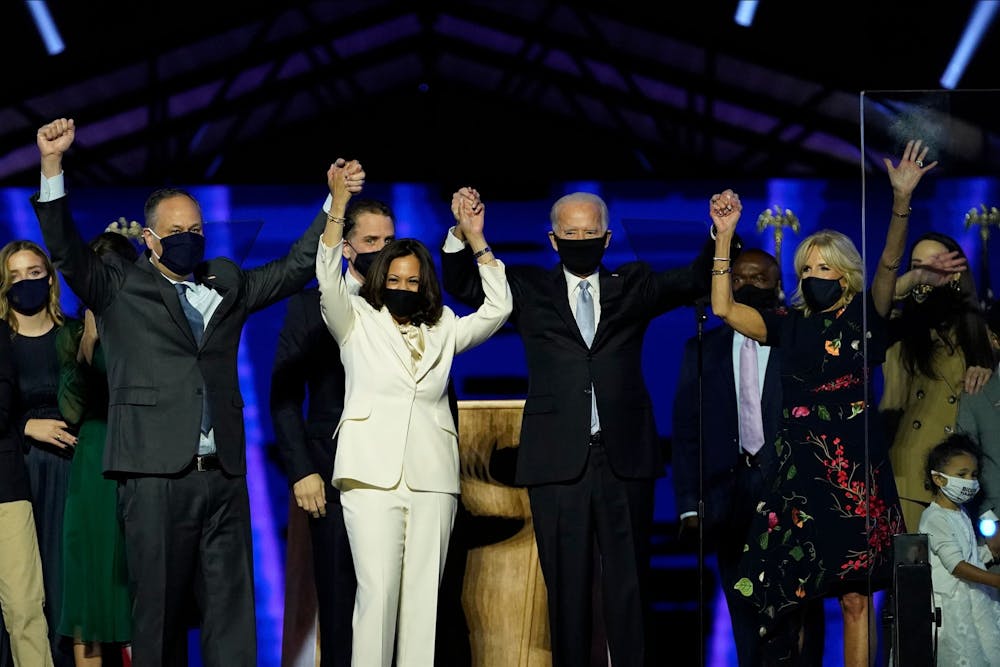A red baseball cap. A white pantsuit. Aviator sunglasses. In other words, American politics.
The way we dress and accessorize is used as a symbolic representation of political and social movements. Fashion allows us to share what we believe and support in both coded and obvious ways. Although politics has nothing to do with fashion directly, clothing choices made by (and on behalf of) politicians remain relevant in the political conversation, for better or worse.
However, more often than not, clothing worn by female politicians in particular is the focus of red-herring distractions and criticisms of the individuals themselves, rather than meaningful critique of any relevant policy proposal.
For example, in the 2016 presidential debate, news commentators carved out time to comment on Hillary Clinton's wardrobe, but did not waste time commenting on Donald Trump's clothing choices. Last month, U.S. Rep. Alexandria Ocasio-Cortez, D-N.Y., was criticized for wearing borrowed designer clothing for a professional photoshoot with Vanity Fair. However, Barack Obama was never criticized for his clothing when he donned the cover of the magazine years earlier.
That’s not to say male politicians are entirely excluded from controversy stemming from their clothing. In 2014, former President Barack Obama was criticized as being unpresidential for days for wearing a tan suit to a White House press conference, and Donald Trump has been criticized for wearing “ill-fitting” suits. However, the conversation surrounding female politicians and their fashion choices almost always exceeds that of male politicians' clothing.
Women, especially those in the political realm, have historically been ridiculed and judged for their appearance. Women on the Senate floor faced restrictive dress codes before the 1990s, and Katherine Langley, the seventh woman to be elected as a member of the House of Representatives, had articles written criticizing her clothing for being too colorful and her hair too “bushy.”
Female news anchors have been criticized for wearing — or not wearing — sleeves on their dresses, regardless of season. First ladies routinely make news cycles with positive or negative appraisal of their clothing and what it might suggest about them.
But, female politicians have also strategically used fashion to preempt criticism and spark conversation. Dressed entirely in white — an allusion to the suffragette movement of the early 1900s — Vice President-elect Kamala Harris took the stage on Nov. 7 to address the nation.
In the 2019 and 2020 State of the Union addresses, a sizable portion of female lawmakers wore white outfits for the same reason, creating a visually striking contrast to the sea of black and navy suits and ties. Nancy Pelosi, Hillary Clinton and Tulsi Gabbard are just a few other examples of women in politics who have strategically worn all white, reflecting a commitment to expanding equality and acknowledging the women who came before them.



